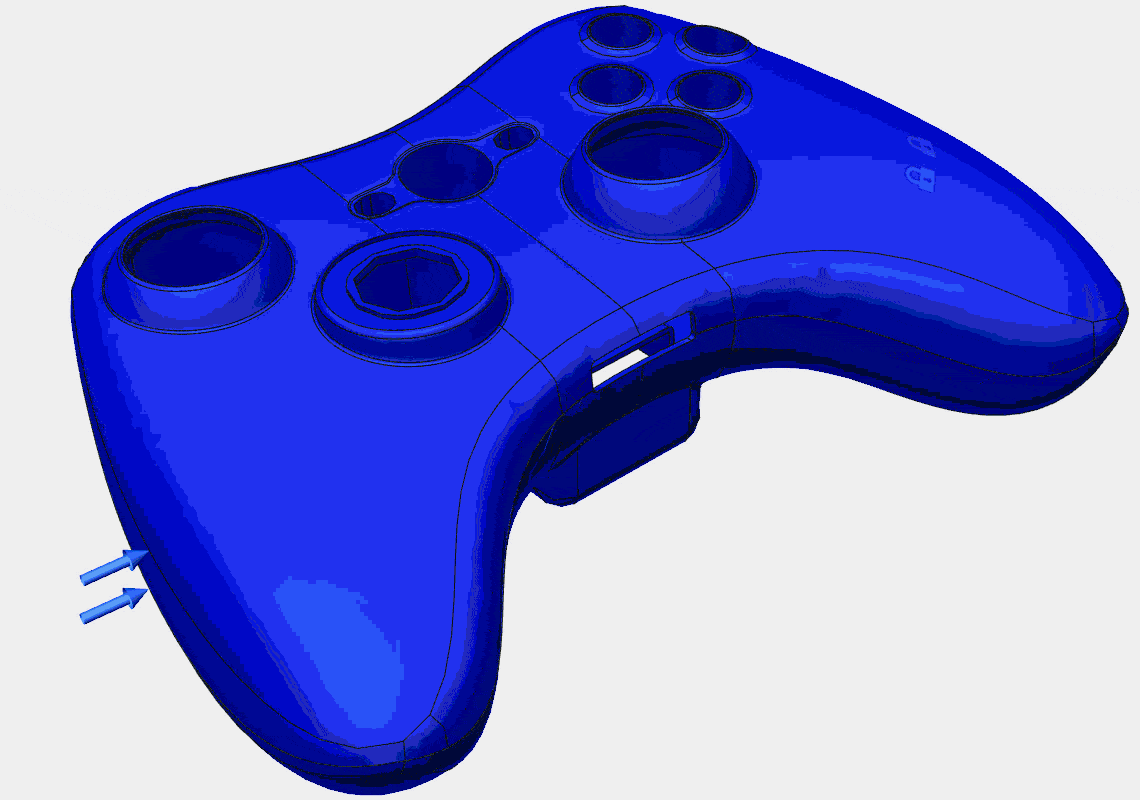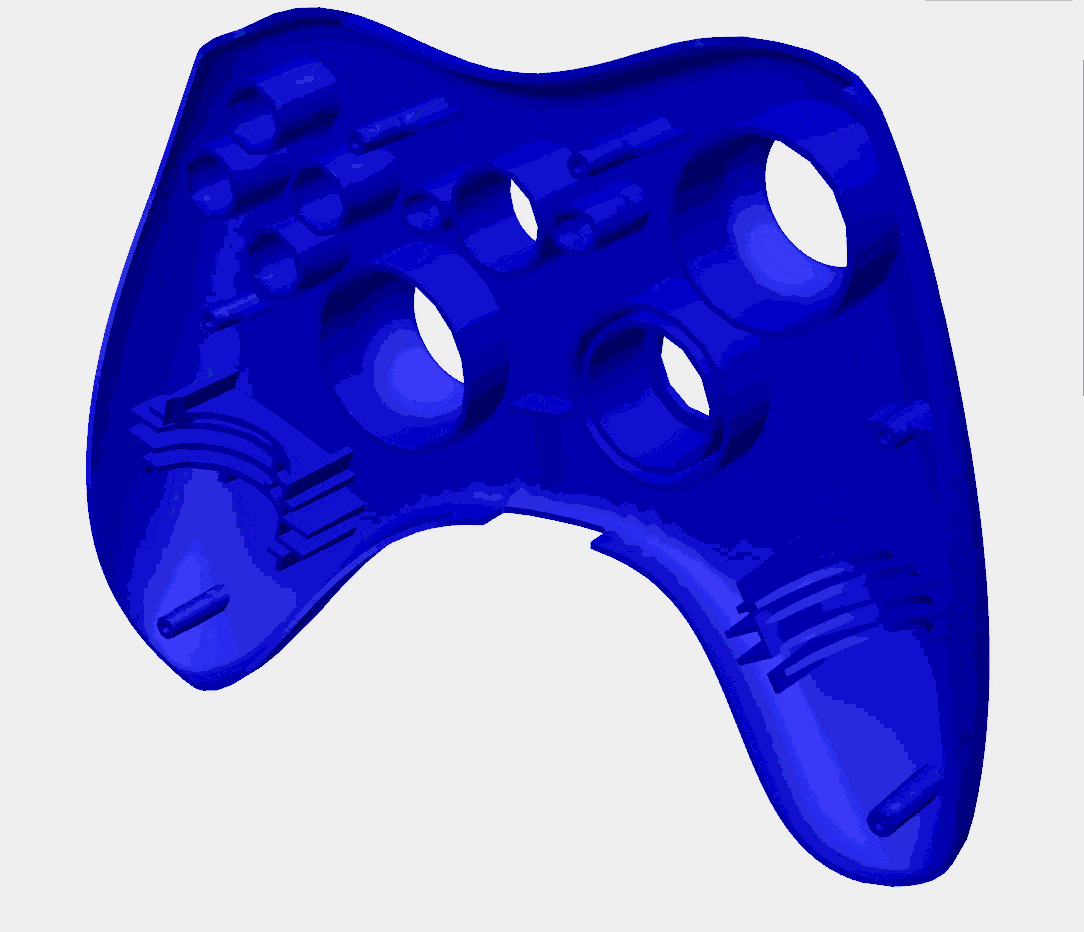I’m not a serious gamer by any means, but I do pick up the controller a few times per week. It’s my way of getting some time to myself. Just me, my favorite IPA, and a sandbox style game. I’m perfectly happy doing everything from following the challenging storyline missions to hunting wild animals in the wilderness.
When the game becomes difficult, the controller goes through several physical challenges of its own. It is bent, compressed, and sometimes even thrown like you just stepped in the end zone. Except it isn’t followed by a touchdown dance.

Let’s look at each of these scenarios as a virtual simulation. Beginning with bending the controller. This can be run as a linear or nonlinear static study. Linear is a good place to start since it is easy to setup and the solver runs very quickly. Then nonlinear can be used to include a nonlinear stress strain curve for the material if it applies. It will also provide more accurate results for stress and displacement. Even observe post failure behavior if the material yields or buckles.

Speaking of buckling, have you ever become so frustrated that you push on both sides of the controller as if to crush it? Linear static studies will tell you where the highest stress locations are, but they won’t indicate signs of buckling! Using a buckling study, we can apply a compressive load and the results provide a buckling load factor for a specified number of mode shapes. For example, the following mode shape animation can handle about 5 times my arm strength (which isn’t a whole lot).

And finally the highest level of frustration for the gamer, turning the controller into a projectile with no regard for direction or target. Dynamic FEA studies enables the ability to test the contact between the controller housing and the floor or wall. Hopefully not your television screen! Test the impact at different angles and gain an understanding of the weak points in the design. Does it make sense to add ribs or change the thickness of existing ones? Many simulation software applications provide the ability to run a “Drop Test” which offers an intuitive interface for setting up the dynamic study.

The next time you find yourself frustrated and blaming the controller, consider the many ways your wrath can be virtually simulated. I’m sure you can come up with other ideas not mention in this article. I’d love to hear them!

(0)